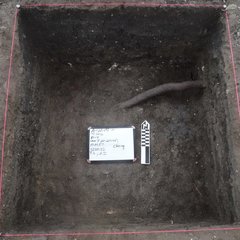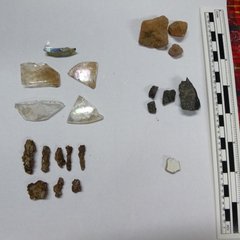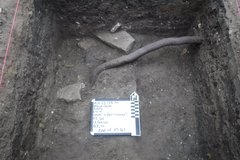In week five, archaeologists continued working in excavation units 3 and 4.
Excavations in unit 3 reached an end when the hardpan covered the base of the unit. Hardpan was initially encountered at approximately 60 cm below datum. Due to the undulating nature of the deposit, the deepest point was at approximately 97 cm below datum. Excavation unit 3 was adjacent to EU-2, which allowed for a clear representation of the hardpan across the two units (Figure 1).
There were very few artifacts from the last three levels of EU-3. Soils at the base of the unit were silty clay with few inclusions. After excavation the unit was completed documented with photographs, notes, and maps.






